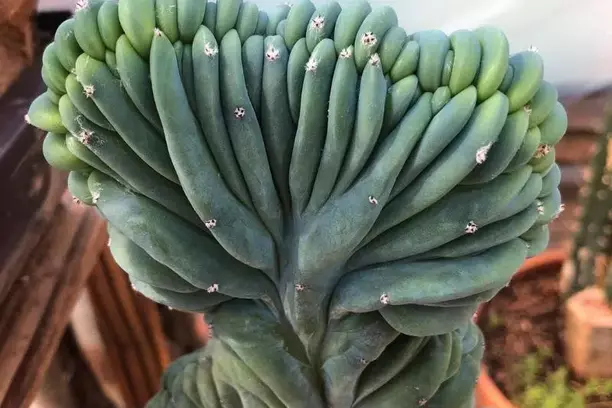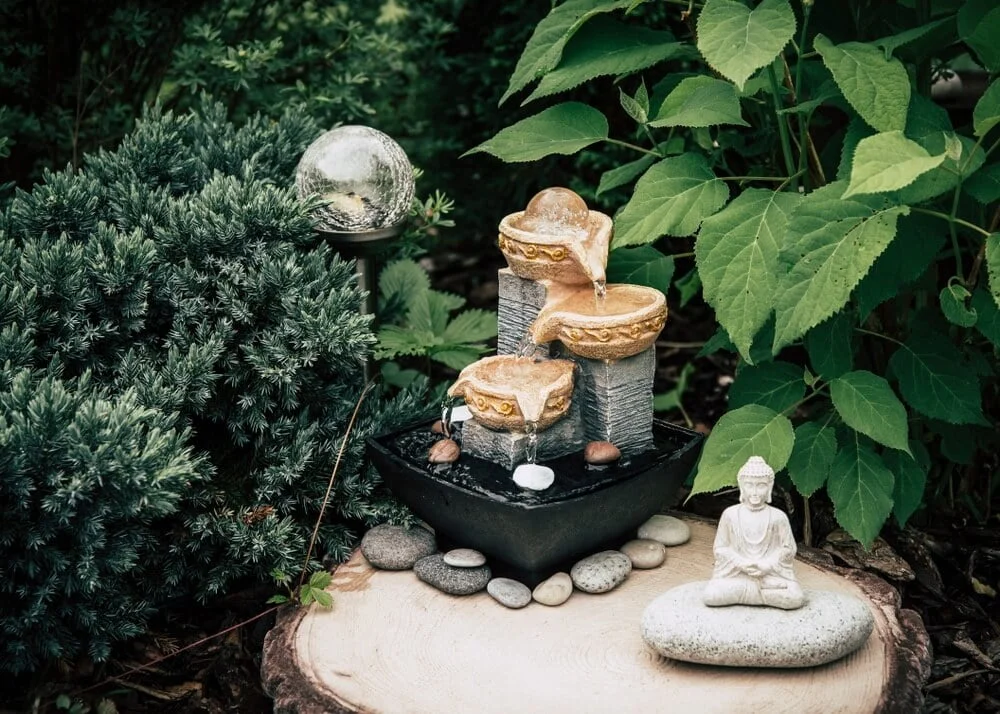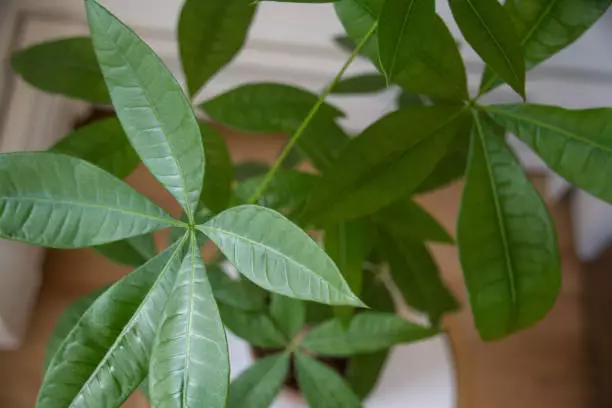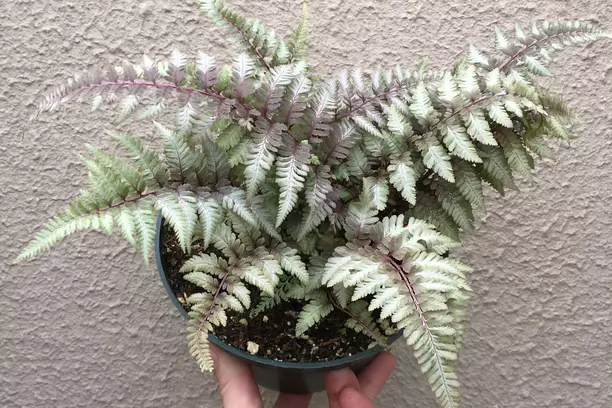Blue Myrtle Cactus is a beautiful and unique plant that is native to the deserts of the southwestern United States and Mexico. It’s a hardy plant that can survive in a variety of conditions and is easy to care for, making it a popular choice for many gardeners.
In this article, we will provide a comprehensive guide on how to care for Blue Myrtle Cactus. We will cover everything from understanding the plant to identifying it, propagating, planting and potting, ideal environment and light requirements, watering and humidity, soil and fertilization, growth and maintenance, pests and diseases, and special features. We will also provide answers to some frequently asked questions to help you become a confident and knowledgeable caretaker of this unique plant.
Understanding Blue Myrtle Cactus
Blue Myrtle Cactus, also known as Myrtillocactus geometrizans, is a succulent plant that belongs to the Cactaceae family. This species is native to Mexico and is commonly referred to as the Blue Candle or Bilberry Cactus due to its blue-green color and cylindrical shape. The Blue Myrtle Cactus grows in xerophilous scrub and tropical deciduous forests.
The Blue Myrtle Cactus is a candelabra-shaped plant that can grow up to 20 feet tall. It has a geometric pattern of ribs that run down the length of its stem. The stem is covered in small, sharp spines that can cause irritation if touched. The Blue Myrtle Cactus produces small, pink flowers that bloom in the summer months. These flowers are followed by edible, red fruits known as Garambullo.

To care for the Blue Myrtle Cactus, it is essential to understand its natural environment. This cactus is adapted to hot, dry conditions and requires well-draining soil. It should be watered sparingly, allowing the soil to dry out between waterings. Overwatering can cause root rot, which can be fatal to the plant.
The Blue Myrtle Cactus requires full sun to thrive. It should be placed in a location that receives at least six hours of direct sunlight per day. If grown indoors, it should be placed near a south-facing window that receives ample sunlight.
Identifying Blue Myrtle Cactus
When it comes to identifying Blue Myrtle Cactus, there are a few key features to look out for. First, take a look at the stems. Blue Myrtle Cactus has a columnar shape, with multiple ribs running vertically up and down the length of the stem. These ribs create a geometric pattern that is unique to this species.
Another feature to note is the bluish-green color of the stem. This is due to a waxy coating that helps protect the plant from the harsh desert environment. As the plant matures, the stem will become more woody and lose some of its waxy appearance.
In terms of size, Blue Myrtle Cactus can grow up to 15 feet tall, although it is more common to see them at around 6-8 feet. They are also relatively cold-tolerant, able to survive in temperatures as low as 20 degrees Fahrenheit.
When trying to identify Blue Myrtle Cactus, it is important to note that there are other cacti species that may look similar. However, the unique geometric pattern created by the ribs on the stem is a key identifying feature.
Blue Myrtle Cactus Propagation
Propagating Blue Myrtle Cactus can be done through two methods – stem cuttings and seeds. Both methods are easy and straightforward, and we’ll discuss them below.
Stem Cuttings
Stem cuttings are the most common method of propagating Blue Myrtle Cactus. Here’s how to do it:
- Choose a healthy Blue Myrtle Cactus plant and identify a stem that is at least 4 inches long and has no flowers or buds.
- Use a sharp, clean knife to cut the stem at a 45-degree angle.
- Allow the cutting to dry for a day or two.
- Dip the cut end of the stem in rooting hormone powder.
- Plant the cutting in well-draining soil and water it lightly.
- Place the pot in a warm, bright location, but not in direct sunlight.
- Keep the soil moist but not waterlogged.
- After a few weeks, the cutting should start to root and grow new leaves.
Seeds
Propagating Blue Myrtle Cactus from seeds is also possible and straightforward. Here’s how to do it:
- Collect the seeds from a mature Blue Myrtle Cactus plant.
- Soak the seeds in water for 24 hours to soften the outer shell.
- Plant the seeds in well-draining soil and water lightly.
- Place the pot in a warm, bright location, but not in direct sunlight.
- Keep the soil moist but not waterlogged.
- After a few weeks, the seeds should start to germinate and grow into small plants.
Propagating Blue Myrtle Cactus is a simple and rewarding process. Whether you choose to use stem cuttings or seeds, with a little care and patience, you can quickly grow new Blue Myrtle Cactus plants.
Planting and Potting
When it comes to planting and potting blue myrtle cactus, there are a few key things to keep in mind to ensure that your plant thrives. First and foremost, it’s important to choose the right potting mix. A fast-draining cactus mix is ideal, as it will allow excess water to drain away quickly and prevent the roots from becoming waterlogged.
When potting your blue myrtle cactus, it’s important to select a pot with drainage holes in the bottom. This will allow excess water to escape and prevent the roots from rotting. We recommend using a pot with a diameter that is slightly larger than the width of your plant.
Before planting your blue myrtle cactus, you should also consider adding a layer of gravel or small stones to the bottom of the pot. This will help to improve drainage and prevent the roots from sitting in water.
When planting your blue myrtle cactus, gently remove it from its existing pot and loosen any tangled roots. Place the plant in the center of the new pot and fill in around it with potting mix, gently pressing down to ensure that there are no air pockets.
After planting, it’s important to water your blue myrtle cactus thoroughly and then allow the soil to dry out completely before watering again. Overwatering can be a common issue with cacti, so it’s important to monitor the soil moisture levels carefully.
Overall, with the right potting mix, pot, and careful attention to watering, your blue myrtle cactus should thrive and bring you years of enjoyment.
Ideal Environment and Light Requirements
To ensure the best growth and health of our Blue Myrtle Cactus, we need to provide it with the ideal environment and light requirements. Here’s what we need to know:
Light Requirements
Our Blue Myrtle Cactus requires bright, indirect light to thrive. It is best to place it near a south-facing window where it can receive ample sunlight. However, direct sunlight can be harmful to the cactus, so we need to avoid exposing it to direct sunlight for extended periods. If we don’t have a south-facing window, we can use artificial light to supplement natural light. A good rule of thumb is to provide 1000-1500 foot candles of light per day.
Temperature Requirements
Our Blue Myrtle Cactus prefers temperatures between 60-80°F (15-27°C). It is essential to avoid exposing the cactus to extreme temperatures, especially during the winter months. If the temperature drops below 50°F (10°C), we need to move the cactus to a warmer location.
Sunlight Exposure
Our Blue Myrtle Cactus can tolerate partial shade, but it grows best in full sun. If we want our cactus to flower, we need to provide it with at least six hours of direct sunlight per day. However, we need to be careful not to expose the cactus to direct sunlight for extended periods, as it can damage the plant.
South-facing Window
If we place our Blue Myrtle Cactus near a south-facing window, we need to be cautious of the intense sunlight that it receives. To prevent the cactus from getting sunburned, we can use sheer curtains or blinds to filter the light. It is also essential to rotate the cactus regularly to ensure even growth.
In summary, our Blue Myrtle Cactus requires bright, indirect light, temperatures between 60-80°F, and at least six hours of direct sunlight per day to thrive. We need to avoid exposing it to direct sunlight for extended periods, especially during the winter months. By providing the ideal environment and light requirements, we can ensure the best growth and health for our Blue Myrtle Cactus.
Watering and Humidity
Blue myrtle cactus care requires a careful balance of watering and humidity to keep it thriving. Overwatering can cause the roots to rot while underwatering can lead to dehydration and wilting. We recommend watering the blue myrtle cactus once a week during the growing season and once every two to three weeks in the winter.
When watering, it’s important to use room-temperature water to avoid shocking the plant. We suggest using a watering can with a narrow spout to prevent water from pooling on the surface of the soil. It’s also important to avoid getting water on the leaves, as this can cause damage or promote fungal growth.
To check if the blue myrtle cactus needs watering, stick your finger into the soil about an inch deep. If it feels dry, it’s time to water. If it feels moist, wait a few more days before checking again.
Humidity is also an important factor in blue myrtle cactus care. These cacti are native to humid tropical regions, so they require higher humidity levels than other cacti. We recommend keeping the humidity level between 40% and 60%.
To increase humidity, you can place a tray of water near the cactus or use a humidifier. You can also mist the cactus with water once a week, but be sure to avoid getting water on the leaves.
In summary, proper watering and humidity are essential for the health and growth of the blue myrtle cactus. Water once a week during the growing season, use room temperature water, and avoid getting water on the leaves. Keep humidity levels between 40% and 60% and use a humidifier or tray of water to increase humidity if necessary.
Soil and Fertilization
When it comes to blue myrtle cactus care, soil, and fertilization are essential factors to consider. Blue myrtle cacti thrive in well-draining soil that is slightly acidic with a pH range of 6.0 to 7.0. Sandy soil is ideal for blue myrtle cactus, as it allows for proper drainage and aeration.
To prepare the soil for planting, we recommend adding a mixture of sand, perlite, and vermiculite to the soil. This combination will improve the soil’s drainage and prevent waterlogging, which can lead to root rot. Additionally, we suggest adding a small amount of grit to the soil mix to provide the cactus with the necessary minerals and nutrients.
Fertilization is also crucial for blue myrtle cactus care. We recommend fertilizing the cactus during the growing season, which is typically from spring to fall. A balanced fertilizer with equal amounts of nitrogen, phosphorus, and potassium is ideal for blue myrtle cactus. We suggest mixing the fertilizer with water and applying it to the soil every four to six weeks.
It’s important not to over-fertilize the cactus, as this can lead to root burn and damage. Always follow the manufacturer’s instructions when applying fertilizer and avoid fertilizing during the winter months when the cactus is dormant.
In summary, blue myrtle cactus care requires well-draining soil, proper fertilization, and aeration. By following these simple soil and fertilization tips, we can ensure that our blue myrtle cacti thrive and remain healthy.
Growth and Maintenance
Growing a blue myrtle cactus is relatively easy. With proper care, it can thrive as a houseplant or outdoor perennial. Here are some tips for ensuring your blue myrtle cactus grows well and stays healthy.
Growing
Blue myrtle cactus prefers bright, indirect sunlight. It can tolerate some direct sunlight, but too much can cause sunburn. During the summer, it’s best to keep the cactus in a shaded area to prevent it from drying out or overheating.
The cactus requires well-draining soil and doesn’t like to be overwatered. It’s best to water when the soil is dry to the touch, usually every two to three weeks. During the winter months, the cactus needs less water.
Repotting
Blue myrtle cactus should be repotted every two to three years. When repotting, use a well-draining soil mix, and be sure to add some sand or perlite to improve drainage. It’s also important to choose a pot that’s slightly larger than the current one.
Maintenance
Blue myrtle cactus requires minimal maintenance. It’s best to avoid touching the cactus as the spines can be sharp and cause injury. If the cactus becomes too tall or leggy, it’s okay to prune it back to encourage bushier growth.
Blooms
Blue myrtle cactus blooms in the late summer or early fall. The flowers are usually pink or purple and can last for several weeks. To encourage blooms, it’s best to keep the cactus in a cool, dry place during the winter months.
In summary, blue myrtle cactus is a low-maintenance plant that requires minimal care. With proper growing conditions, repotting, and maintenance, it can thrive as a houseplant or outdoor perennial.
Pests and Diseases
When it comes to caring for blue myrtle cactus, it is essential to be aware of the potential pests and diseases that can affect them. Here are some of the most common issues that we may encounter:
Root Rot
Root rot is a common issue that can affect cacti, including blue myrtle cactus. This problem occurs when the roots of the plant become waterlogged, leading to fungal growth. To prevent root rot, we should avoid overwatering our cactus and ensure that it is planted in well-draining soil.
Pests
Blue myrtle cactus can be affected by various pests, including spider mites, mealybugs, and scales. These pests can cause damage to the plant by feeding on its sap or leaves. To prevent pest infestations, we should regularly inspect our cactus for signs of damage and treat any issues promptly.
Diseases
Blue myrtle cactus can also be affected by various diseases, including fungal infections and bacterial rot. These issues can cause discoloration, wilting, and other symptoms. To prevent disease, we should avoid overwatering our cactus and ensure that it is planted in well-draining soil.
Spines
While the spines of blue myrtle cactus may be aesthetically pleasing, they can also be a potential hazard. We should handle our cactus with care and wear gloves when necessary to avoid injury.
In conclusion, by being aware of the potential pests and diseases that can affect blue myrtle cactus, we can take the necessary steps to prevent these issues from occurring. By providing our cactus with the proper care and attention, we can ensure that it remains healthy and vibrant for years to come.
Special Features
The blue myrtle cactus, also known as the myrtle spurge or Euphorbia myrsinites, is a unique and hardy plant that requires minimal care. Here are some of its special features:
- Flowers: The blue myrtle cactus produces small yellow flowers in the spring that bloom in clusters. These flowers are attractive to pollinators such as bees and butterflies, making the plant a great addition to any garden.
- Fruit: After the flowers have bloomed, the blue myrtle cactus produces small, round green fruits that turn yellow as they ripen. These fruits are not edible and should be removed to prevent the plant from becoming too leggy.
- Blueberries: The blue myrtle cactus is sometimes confused with the blueberry cactus because of its blue-green color. However, the blueberry cactus is a different species altogether.
- Peniocerol and Chichipegenin: The blue myrtle cactus has been found to contain the compounds penciocerol and chichipegenin, which have been used in traditional medicine to treat a variety of ailments.
- Medicinal Properties: The blue myrtle cactus has been used in traditional medicine to treat skin conditions, digestive issues, and respiratory problems. However, more research is needed to determine the effectiveness of these treatments.
In conclusion, the blue myrtle cactus is a unique and hardy plant with many special features. Its attractive flowers and ability to attract pollinators make it a great addition to any garden, while its medicinal properties make it a valuable plant in traditional medicine. With minimal care, the blue myrtle cactus can thrive in a variety of environments and provide beauty and benefits for years to come.
Care Guide
Taking care of blue myrtle cactus is not difficult, and it doesn’t require much effort. Here are some tips on how to care for your blue myrtle cactus:
Light Requirements
Blue myrtle cactus prefers bright, indirect sunlight. It can tolerate some direct sunlight, but too much direct sunlight can cause sunburn. If you notice that your cactus is turning yellow or brown, it may be getting too much direct sunlight. On the other hand, if your cactus is not getting enough light, it will start to stretch out and become leggy. If this happens, move your cactus to a brighter location.
Plant Care
Blue myrtle cactus is a low-maintenance plant that doesn’t require much care. Here are some tips on how to take care of your cactus:
- Water: Water your cactus sparingly. Allow the soil to dry out completely before watering again. Overwatering can cause root rot, which can be fatal to your cactus.
- Soil: Blue myrtle cactus prefers well-draining soil. You can use a cactus mix or add sand or perlite to regular potting soil to improve drainage.
- Fertilizer: Blue myrtle cactus doesn’t require much fertilizer. You can fertilize your cactus once a month during the growing season with a cactus fertilizer.
- Pruning: Blue myrtle cactus doesn’t require much pruning. You can remove any dead or yellowing leaves with a pair of clean scissors.
In conclusion, taking care of blue myrtle cactus is easy and doesn’t require much effort. Just remember to give your cactus bright, indirect sunlight, water sparingly, use well-draining soil, fertilize once a month during the growing season, and prune as needed.
Frequently Asked Questions
How to care for a blue candle cactus?
Blue myrtle cactus, also known as blue candle cactus, is a low-maintenance plant that thrives in dry and arid environments. To care for your blue candle cactus, make sure it is planted in well-draining soil, such as cactus potting mix. Water your plant only when the soil is completely dry, and avoid overwatering to prevent root rot. Blue myrtle cactus prefers bright, indirect sunlight, so place it near a window that receives plenty of light.
How much sun does a blue candle cactus need?
Blue myrtle cactus needs bright, indirect sunlight to thrive. It can tolerate direct sunlight for short periods, but prolonged exposure can damage the plant. Place your blue candle cactus near a window that receives plenty of light, but avoid placing it in direct sunlight during the hottest part of the day.
How often should you water a blue candle cactus?
Blue myrtle cactus is a drought-tolerant plant that requires minimal watering. Water your blue candle cactus only when the soil is completely dry, which may be once every two to three weeks. Avoid overwatering, as this can cause root rot and other problems.
Does blue myrtle cactus bloom?
Yes, blue myrtle cactus can bloom, producing small, white or pink flowers. However, blooming is not common for this plant, and it may take several years for it to bloom. To encourage blooming, provide your blue candle cactus with bright, indirect sunlight and avoid overwatering.
What is the growth rate of blue candle cactus?
Blue myrtle cactus is a slow-growing plant that can take several years to reach its full size. However, once established, it can grow up to 3-4 feet tall and wide. The growth rate of your blue candle cactus will depend on several factors, including its environment, soil, and care.
How big can a blue myrtle cactus get?
Blue myrtle cactus can grow up to 3-4 feet tall and wide when fully mature. However, the size of your blue candle cactus will depend on several factors, including its environment, soil, and care. To control the size of your plant, you can prune it back in the spring or summer.
References
- Lincoln, R. (2004). Myrtle Spurge: Options for Control. Retrieved from https://www.nwcb.wa.gov/images/weeds/myrtlespurge_Lincoln.pdf
- NSW Office of Environment and Heritage. (2016). Saving our species hygiene guidelines. Retrieved from https://www.environment.nsw.gov.au/-/media/OEH/Corporate-Site/Documents/Animals-and-plants/Wildlife-management/saving-our-species-hygiene-guidelines-200164.pdf



